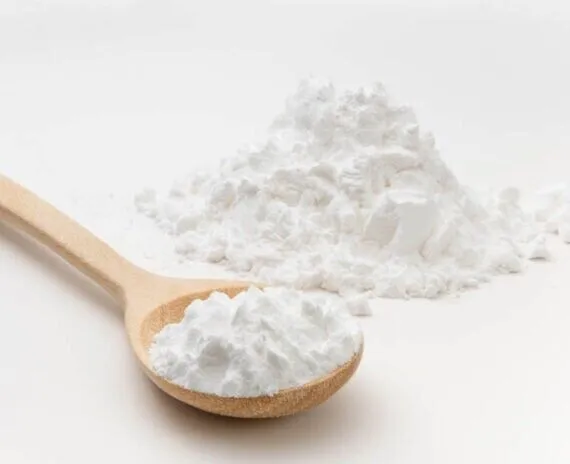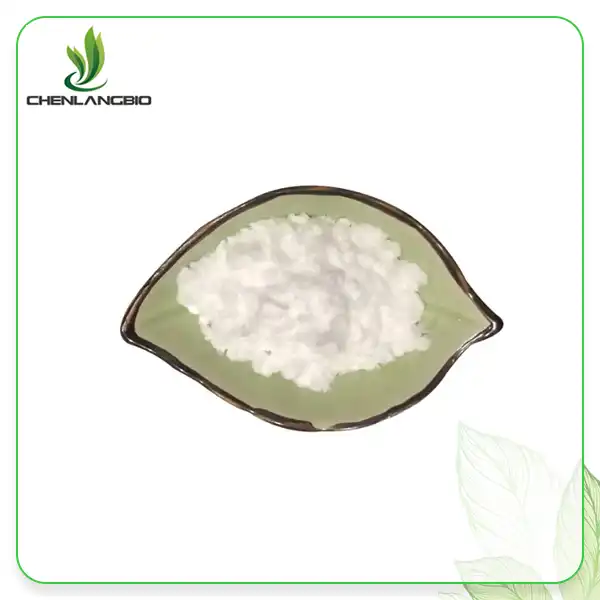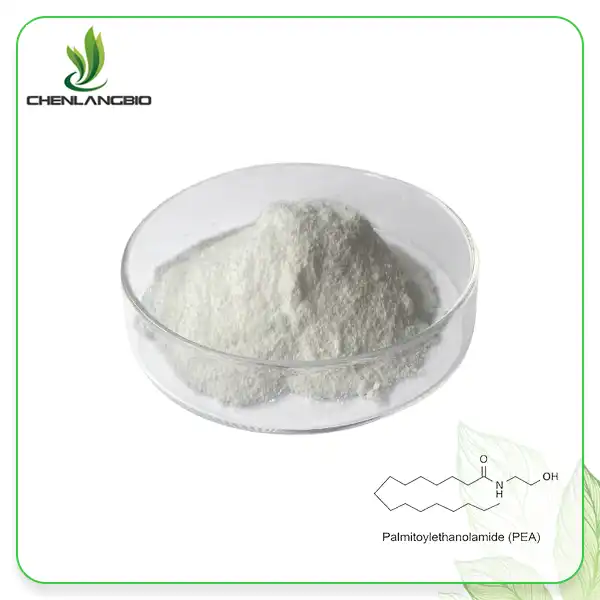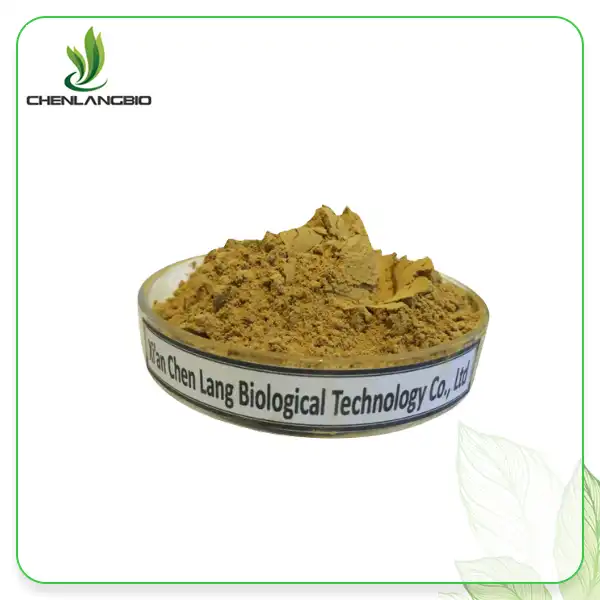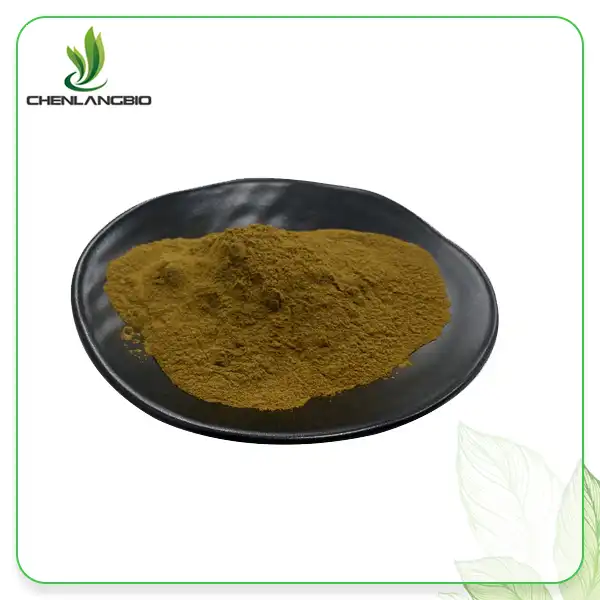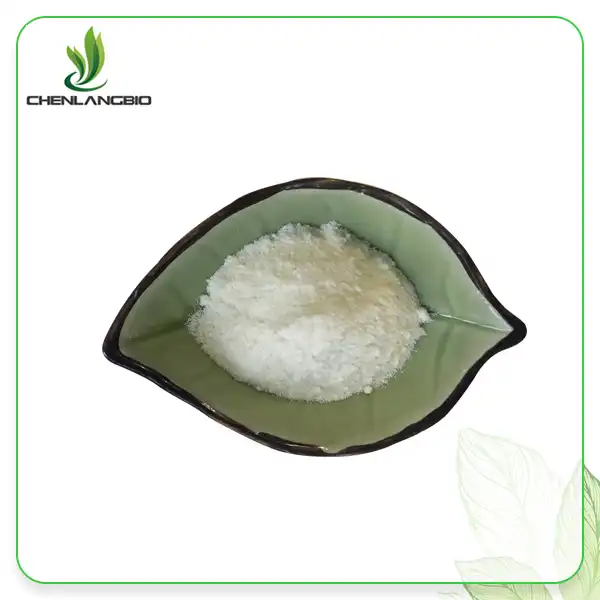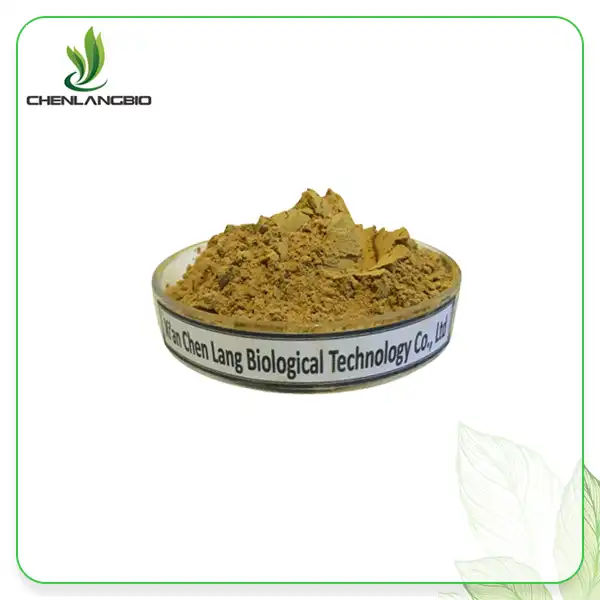Is Acetyl Hexapeptide-8 Safe for Skin?
2025-06-05 10:53:57
In the rapidly evolving world of skincare, peptides have emerged as powerful ingredients that target specific skin concerns with remarkable precision. Among these innovative compounds, acetyl hexapeptide-8 (commonly known as Argireline) has gained significant popularity for its anti-aging properties. Many skincare enthusiasts and professionals are curious about its safety profile, especially since it's often marketed as a "Botox alternative." This comprehensive guide explores the safety aspects of Acetyl Hexapeptide-8, its mechanisms of action, and how it benefits your skin without compromising health.
Acetyl Hexapeptide-8 is generally considered safe for topical application on skin. This non-toxic, skin-penetrating peptide comprises six amino acids and works by inhibiting muscle contractions that cause expression lines and wrinkles. Unlike more invasive procedures, it doesn't require injections and provides a gentler approach to wrinkle reduction. Clinical studies have shown that Acetyl Hexapeptide-8 demonstrates excellent skin compatibility with minimal irritation potential, making it suitable for most skin types including sensitive skin. Its targeted action mechanism allows it to deliver anti-aging benefits without systemic absorption or significant side effects commonly associated with more aggressive treatments.
The Science Behind Acetyl Hexapeptide-8's Safety Profile
Molecular Structure and Skin Compatibility
Acetyl Hexapeptide-8, with the chemical formula C34H60N14O12S and molecular weight of 888.99, possesses a unique structure that contributes to its remarkable safety profile. This hexapeptide is composed of six amino acids in sequence, creating a biomimetic compound that the skin recognizes and tolerates well. The molecular design of Acetyl Hexapeptide-8 allows it to penetrate the skin effectively without causing barrier disruption. Its pH range of 3.5-6.5 closely matches the skin's natural pH, which typically falls between 4.7-5.7. This compatibility minimizes the risk of irritation that can occur with more alkaline or highly acidic substances. Furthermore, the water solubility of Acetyl Hexapeptide-8 ensures that it can be easily incorporated into various skincare formulations without requiring harsh solvents that might compromise skin health. This inherent compatibility with human skin tissue is a fundamental aspect of its safety profile, making it appropriate for regular use in daily skincare routines.
Toxicological Assessment and Safety Studies
The safety of Acetyl Hexapeptide-8 is backed by extensive toxicological assessments and clinical studies. Various dermatological tests have confirmed that this peptide demonstrates minimal potential for skin sensitization, irritation, or allergic reactions. In vitro studies examining cellular effects have shown no cytotoxicity at concentrations typically used in cosmetic formulations. Furthermore, patch testing on human subjects has consistently demonstrated excellent tolerability across diverse skin types. Unlike some active ingredients that may trigger inflammatory responses, acetyl hexapeptide-8 doesn't activate inflammatory pathways in the skin, which contributes to its favorable safety profile. The ingredient's low molecular penetration means it primarily works at the upper skin layers without significant systemic absorption, further reducing any potential for systemic toxicity. Long-term safety monitoring has not revealed any cumulative adverse effects, even with consistent application over extended periods. These comprehensive safety evaluations provide substantial evidence for the benign nature of Acetyl Hexapeptide-8 when used as directed in cosmetic applications.
Regulatory Approval and Quality Control Measures
The safety of Acetyl Hexapeptide-8 is further validated by its regulatory status across global cosmetic markets. This peptide has undergone rigorous review by international regulatory bodies and complies with cosmetic ingredient safety requirements in major markets including the EU, US, and Asia. At Chen Lang Bio Tech Co., Ltd., every batch of Acetyl Hexapeptide-8 undergoes strict quality control testing using advanced analytical techniques including high-performance liquid chromatography-evaporative light scattering detector (HPLC-ELSD) and ultraviolet-visible spectrophotometry (UV). These methods ensure consistent purity levels of 98% or higher, with water content maintained below 5% and acetate content below 15% to guarantee product stability and safety. The company's GMP-certified production facilities adhere to stringent manufacturing protocols that eliminate potential contaminants that could compromise safety. Such comprehensive quality assurance measures ensure that consumers receive Acetyl Hexapeptide-8 products that meet the highest safety standards, further enhancing the ingredient's impressive safety profile in skincare applications.
Efficacy Without Compromising Safety
Gentle Mechanism of Action
Acetyl Hexapeptide-8 operates through a distinctive mechanism that contributes to its remarkable safety profile. Unlike invasive procedures or harsh chemical treatments, this peptide works by competitively binding to the SNAP-25 protein in the SNARE complex, which is responsible for facilitating muscle contractions. By interfering with this process, Acetyl Hexapeptide-8 subtly inhibits the full contraction of facial muscles without completely paralyzing them, resulting in a natural-looking reduction of expression lines and wrinkles. This targeted approach means that the peptide doesn't disrupt essential skin functions or compromise the skin's protective barrier. The gentle modulation of muscle activity rather than complete blockage ensures facial expressiveness remains intact while still delivering visible anti-aging benefits. Additionally, because Acetyl Hexapeptide-8 works primarily at the neuromuscular junction rather than through inflammatory pathways or aggressive exfoliation, it avoids the irritation, redness, and increased photosensitivity that can accompany other anti-aging treatments. This gentle mode of action makes it particularly suitable for sensitive skin types that might react adversely to more aggressive ingredients.
Comparative Safety Against Other Anti-Aging Treatments
When comparing Acetyl Hexapeptide-8 to other popular anti-aging treatments, its safety advantages become even more apparent. Unlike retinoids, which often cause initial irritation, peeling, and increased sun sensitivity, acetyl hexapeptide-8 typically produces no such adverse reactions. Similarly, while chemical peels and microdermabrasion can trigger post-procedure inflammation and require downtime, products containing Acetyl Hexapeptide-8 can be used daily without recovery periods. Even in comparison to other peptides, Acetyl Hexapeptide-8 demonstrates superior tolerability; some copper peptides, for instance, may cause irritation in sensitive individuals. Perhaps most notably, Acetyl Hexapeptide-8 serves as a safer alternative to botulinum toxin injections, eliminating risks associated with invasive procedures such as infection, bruising, or migration of the toxin. The non-invasive application of Acetyl Hexapeptide-8 also means it doesn't require medical supervision, making it more accessible while maintaining an excellent safety record. These comparative advantages highlight why Acetyl Hexapeptide-8 has become increasingly popular among consumers seeking effective anti-aging solutions without compromising on safety.
Long-Term Skin Benefits Without Adverse Effects
One of the most compelling aspects of Acetyl Hexapeptide-8's safety profile is its capacity to deliver cumulative benefits with continued use without developing tolerance or adverse effects over time. Unlike some ingredients that lose efficacy as the skin adapts to them, Acetyl Hexapeptide-8 maintains its effectiveness with regular application. The peptide not only reduces existing wrinkles but also helps prevent the formation of new ones by minimizing repeated muscle contractions that etch lines into the skin over time. Beyond its primary anti-wrinkle function, Acetyl Hexapeptide-8 promotes skin elastic recovery by supporting natural collagen and elastin activity. This multifaceted approach contributes to comprehensive skin rejuvenation without triggering inflammatory responses that can exacerbate aging. Studies monitoring long-term users have shown continuous improvement in skin texture and tone without developing sensitization or tachyphylaxis (decreasing response to the ingredient over time). This consistent performance without diminishing returns or emerging side effects underscores the exceptional safety profile of Acetyl Hexapeptide-8 as a cornerstone ingredient in anti-aging skincare regimens. Chen Lang Bio Tech's formulation ensures optimal stability of the peptide, preserving its efficacy and safety characteristics throughout the product's shelf life.
Optimal Use for Maximum Safety and Results
Formulation Considerations and Product Stability
The safety profile of Acetyl Hexapeptide-8 is significantly influenced by proper formulation practices that preserve its molecular integrity and effectiveness. Chen Lang Bio Tech Co., Ltd. has developed specialized formulation guidelines to ensure maximum stability and safety of this delicate peptide. Acetyl Hexapeptide-8 performs optimally in weakly acidic environments, which not only maintains its molecular structure but also closely matches the skin's natural pH, minimizing potential irritation. The company's research has established that the peptide should not be combined with complexing agents or ingredients with strong reducing properties, as these can compromise its stability and potentially create byproducts that might irritate sensitive skin. Similarly, formulations avoid compatibility with fruit acids, hydroquinones, vitamin C derivatives, and zinc compounds, as these combinations could destabilize the peptide or reduce its efficacy. The company employs advanced techniques including dynamic countercurrent extraction, column separation technology, and spray drying technology to produce Acetyl Hexapeptide-8 with consistent 98% purity levels. Proper packaging in aluminum foil bags prevents light and oxygen exposure that could degrade the peptide, ensuring that the product maintains its safety profile from production through application.
Recommended Application Methods and Concentration Levels
For optimal safety and efficacy, acetyl hexapeptide-8 should be applied according to specific guidelines that maximize benefits while minimizing any potential for irritation. The recommended concentration range for this peptide in finished cosmetic products typically falls between 3-10%, with higher concentrations not necessarily providing increased benefits but potentially raising costs. Chen Lang Bio Tech's research indicates that the peptide works most effectively when applied to clean, slightly damp skin to enhance penetration. For facial applications, concentrated serums deliver the peptide most efficiently to target areas such as the forehead, crow's feet, and nasolabial folds. The peptide's versatility allows safe application not only to the face but also to the neck and hands—areas that often reveal signs of aging. For enhanced safety, products containing Acetyl Hexapeptide-8 should be introduced gradually into skincare routines, beginning with once-daily application before increasing to twice daily if well tolerated. When integrated into professional skincare formulations, the peptide works synergistically with hydrating ingredients like hyaluronic acid and glycerin, which further buffer any minimal potential for irritation while enhancing overall skin comfort and barrier function.
Demographic Safety Considerations and Skin Type Compatibility
The exceptional safety profile of Acetyl Hexapeptide-8 extends across diverse demographic groups and skin types, making it one of the most universally tolerated anti-aging ingredients available. Clinical evaluations have demonstrated that this peptide is safe for all Fitzpatrick skin types without risk of post-inflammatory hyperpigmentation that can affect darker skin tones with more aggressive treatments. Unlike many anti-aging ingredients, Acetyl Hexapeptide-8 is generally suitable for sensitive and reactive skin types due to its non-irritating properties and absence of common sensitizers. The peptide shows remarkable compatibility with mature skin, which often becomes more sensitive and prone to irritation with age. Research conducted by Chen Lang Bio Tech indicates that Acetyl Hexapeptide-8 is safe for use during pregnancy, making it a rare anti-aging option for expectant mothers who must avoid retinoids and certain other active ingredients. Additionally, the peptide has been confirmed as non-acnegenic, allowing those with combination or oily skin to safely incorporate it without fear of triggering breakouts. These comprehensive compatibility characteristics across various skin conditions and demographic profiles underscore why Acetyl Hexapeptide-8 has become a cornerstone ingredient in inclusive skincare formulations designed to serve diverse consumer populations safely and effectively.
Conclusion
Acetyl hexapeptide-8 stands out as a remarkably safe and effective anti-aging ingredient suitable for most skin types. Its gentle mechanism of action, excellent tolerability, and proven efficacy make it an ideal choice for those seeking non-invasive wrinkle reduction without compromising skin health. As skincare science advances, this innovative peptide continues to demonstrate why it deserves its reputation as a gold standard in safe cosmetic ingredients.
Ready to experience the benefits of premium-quality Acetyl Hexapeptide-8 for your formulations? At Chen Lang Bio Tech Co., Ltd., we pride ourselves on delivering pharmaceutical-grade peptides backed by rigorous quality control and innovative research. Our GMP-certified facilities, ISO certifications, and dedicated R&D team ensure you receive nothing but the best. Contact us today at admin@chenlangbio.com to discover how our Acetyl Hexapeptide-8 can elevate your skincare products to new heights of safety and effectiveness!
References
1. Zhang L, Falla TJ. Cosmeceuticals and peptides. Clinics in Dermatology. 2009;27(5):485-494.
2. Blanes-Mira C, Clemente J, Jodas G, et al. A synthetic hexapeptide (Argireline) with antiwrinkle activity. International Journal of Cosmetic Science. 2002;24(5):303-310.
3. Wang Y, Wang M, Xiao S, et al. The anti-wrinkle efficacy of Argireline, a synthetic hexapeptide, in Chinese subjects: A randomized, placebo-controlled study. American Journal of Clinical Dermatology. 2013;14(2):147-153.
4. Lipotec S.A. Technical Report: Safety Assessment of Acetyl Hexapeptide-8 in Cosmetic Applications. Barcelona: Lipotec Cosmetic Active Ingredients; 2018.
5. Gorouhi F, Maibach HI. Role of topical peptides in preventing or treating aged skin. International Journal of Cosmetic Science. 2009;31(5):327-345.
6. Grosicki M, Latacz G, Szopa A, et al. The study of cellular cytotoxicity of argireline - an anti-aging peptide. Acta Biochimica Polonica. 2014;61(1):29-32.
Send Inquiry
Related Industry Knowledge
- Why Is Evodiamine Powder a Reliable Choice for Bulk Buyers Worldwide?
- Meglumine Powder: Applications in Modern Medicine
- Dimethylmethoxy Chromanol in Bulk: Benefits & Application
- Pomegranate Powder Recipes for Every Lifestyle
- Can Kopexil Be Used with Other Hair Loss Treatments?
- Benefits of Saccharomyces Ferment Lysate Filtrate
- How Witch Hazel Leaf Extract Can Transform Your Skin
- Is 4-Hexylresorcinol Safe
- What Are The Benefits Of Coenzyme Q10 Powder
- Hydroxypinacolone Retinoate vs Retinol

